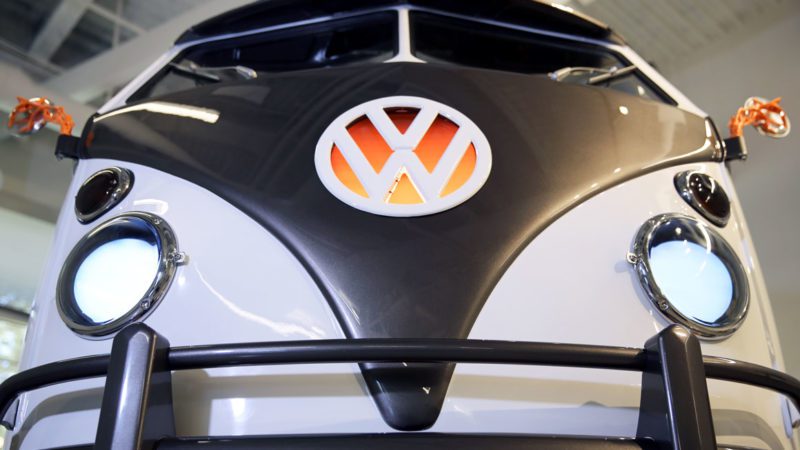German carmaker Volkswagen has celebrated the launch of its newly renamed research lab, Innovation and Engineering Center California (IECC), with a futuristic electric overhaul of its iconic classic Microbus, otherwise known as Kombi.
Building on a long history of naming convention, the “Type 20” concept – so named for the IECC’s 20 year or so history under the name ERL (Electronics Research Lab) – has had the full treatment from the innovation centre.
“The future of the Volkswagen Group will be defined by our success in developing new technology that is designed to meet our customers’ needs,” said Scott Keogh, CEO of Volkswagen America in a statement,
“As we roll out the next generation of electric and autonomous vehicles, innovation will increasingly define who we are.”
Gone is the chugging engine so famously located in the original Kombi’s rear boot, replaced in the Type 20 with an electric motor that delivers 234Nm of torque – hill-climbing troubles solved.
A far cry from the carmaker’s reborn production Microbus, the electric ID Buzz, the design team has gone all out with an orange and yellow geometric design, while organic branch-like features have been developed using bio-mimetic “generative design” to maximise strength in areas such as seat legs and steering wheel.
Cutting edge features abound in the Type 20, such as a wide angle camera built into second window on the driver’s side of the Kombi that can “recognise” drivers and passengers (once loaded into the Nvidia software system).
A microphone is integrated in key areas of vehicle including the front exterior, the driver seat area and the rear passenger zone allowing occupants to “converse” with the Kombi, such as asking it how much charge it has.
Completing the futuristic Type 20 concept, a holographic screen integrated into the dash generates 3D images without the need for special glasses.
“We are excited to move into our next chapter as the IECC, to continue designing innovations that will bring the Volkswagen Group vehicles into the future with cutting-edge technology,” said Nikolai Reimer, IECC’s senior VP in a statement.
“The Type 20 is a fantastic example of how we celebrate our heritage while striving to advance our technology.”
While nothing more than a whimsical, high-spec’d, concept, the Type 20 represents what the IECC is all about.
Founded in 1998 with just three employees, it has since grown to employ over 180 researchers, product designers, engineers and social scientists, developing a number of technologies including “Stanley”, the first robotic car to navigate over 200km of desert in the 2005 DARPA Grand Challenge.
While we here at The Driven are certainly taken by the futuristic, electric overhaul of the old-school Kombi, we don’t think it would get too far in a similar challenge – the IECC has only seen fit to add a 10kWh battery.
The Type 20 electric Kombi will be on display at the IECC for the duration of the celebration of the company’s 20-year history innovating in Silicon Valley.

Bridie Schmidt is associate editor for The Driven, sister site of Renew Economy. She has been writing about electric vehicles since 2018, and has a keen interest in the role that zero-emissions transport has to play in sustainability. She has participated in podcasts such as Download This Show with Marc Fennell and Shirtloads of Science with Karl Kruszelnicki and is co-organiser of the Northern Rivers Electric Vehicle Forum. Bridie also owns a Tesla Model Y and has it available for hire on evee.com.au.




